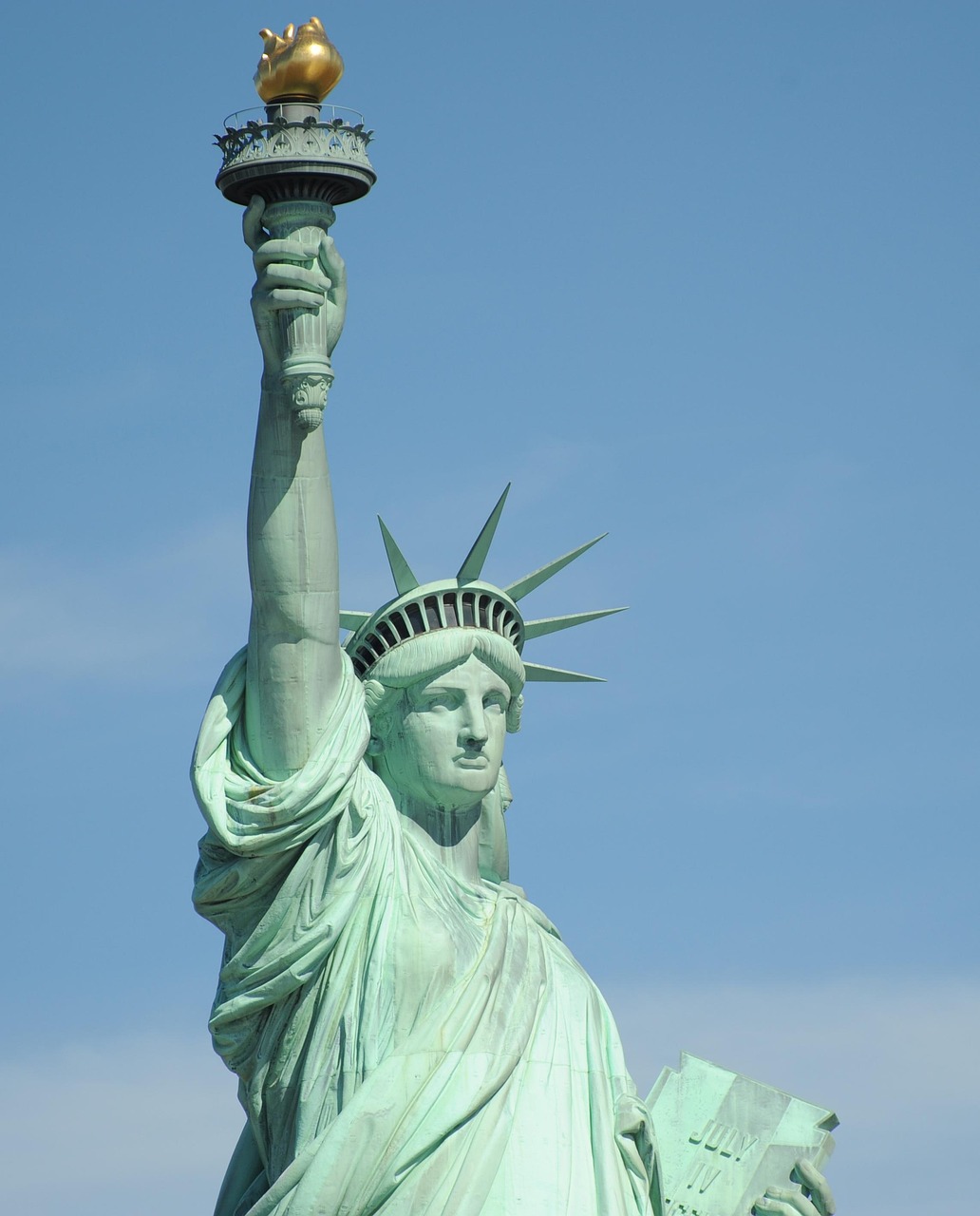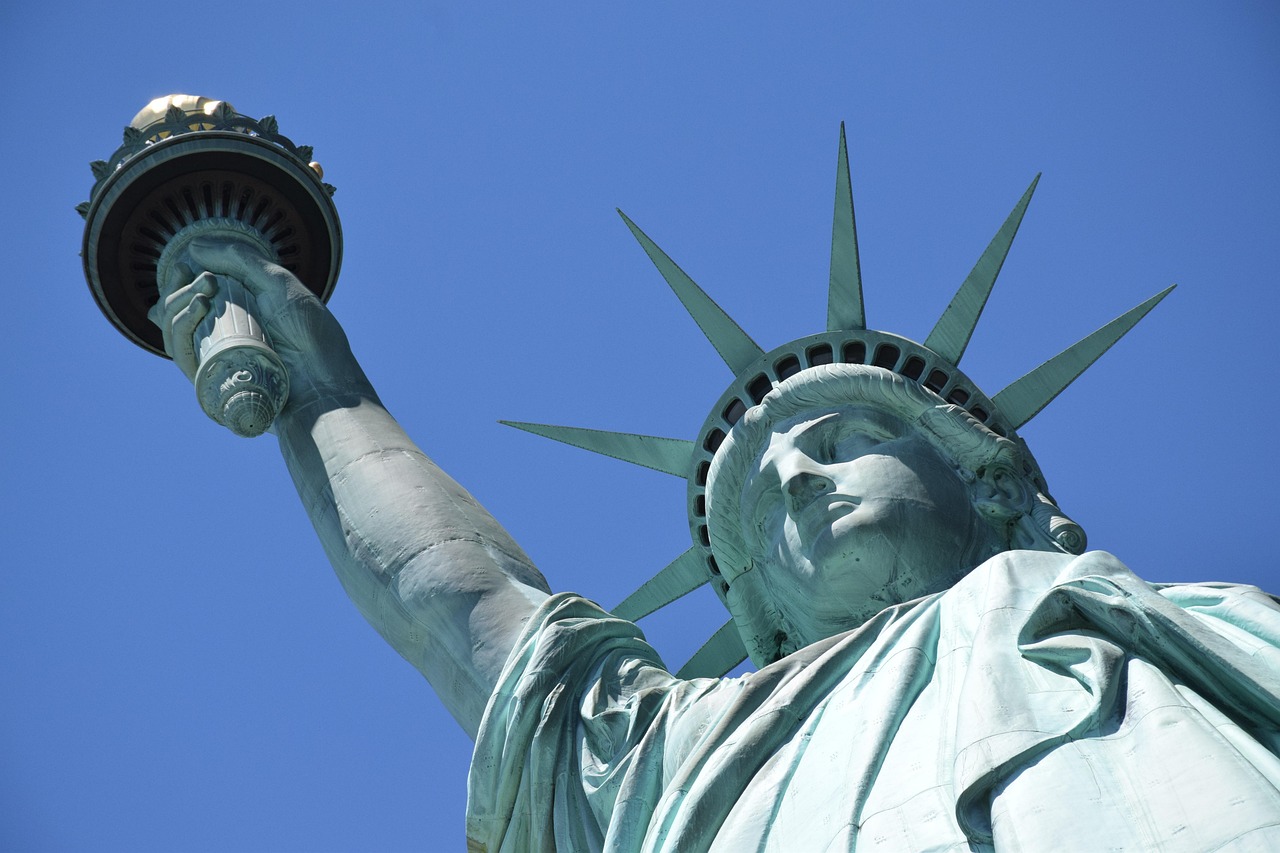Statue of Liberty
Standing tall on Liberty Island in New York’s Upper Bay, the Statue of Liberty rises to a height of 305 feet (93 metres) including its pedestal. (Encyclopedia Britannica) In the graceful form of a robed woman, she holds high a torch in her right hand and clutches in her left a tablet inscribed with “JULY IV MDCCLXXVI” — the date of the U.S. Declaration of Independence. (Encyclopedia Britannica)
Origins & Purpose
The statue was a generous gift from France to the United States, celebrating the two nations’ friendship and the centenary of American independence. (Encyclopedia Britannica) Conceived by French historian Édouard de Laboulaye in 1865, the project took shape under French sculptor Frédéric‑Auguste Bartholdi, who led the work beginning around 1875. (Encyclopedia Britannica)
The statue’s structure is not solid copper but fashioned from hammered copper sheets layered over an internal framework of steel supports — a design influenced by Alexandre‑Gustave Eiffel. (Encyclopedia Britannica)

Construction & Dedication
Built in France between 1875 and 1884, the figure was then shipped to New York in pieces in 1885 and reassembled on Liberty Island in 1886. (Encyclopedia Britannica) The U.S. dedication took place on October 28, 1886, led by President Grover Cleveland. (Encyclopedia Britannica) Over the years the torch has seen modifications, including conversion to electric power and restoration efforts. (Encyclopedia Britannica)
Symbolism & Legacy
The Statue of Liberty is instantly recognizable as a symbol of hope, freedom and justice. (Encyclopedia Britannica) Positioned near Ellis Island — the gateway for millions of immigrants — she stands as a beacon welcoming the “tired, the poor, the huddled masses yearning to breathe free,” in the words of poet Emma Lazarus. (Encyclopedia Britannica)
In 1984, the site was designated a UNESCO World Heritage Site, marking its global cultural significance. (Encyclopedia Britannica)
Administration & Access
Initially managed by the U.S. Lighthouse Board (because the torch served as a navigational aid), responsibility later passed to the U.S. War Department in 1901. (Encyclopedia Britannica) It became a national monument in 1924 and from 1933 fell under the care of the National Park Service. (Encyclopedia Britannica) The island was renamed Liberty Island in 1956, and in 1965 Ellis Island was added to the monument’s jurisdiction. (Encyclopedia Britannica)
Visitors today can ascend to observation points in the pedestal or crown (via stairs or elevator), enjoying sweeping views across the harbour. (Encyclopedia Britannica)
If you like, I can rewrite this in a more poetic style (since you enjoy “descriptive text in the style of poems”) or tailor it for a younger audience (4th-grade level) as you prefer. Would you like that?



